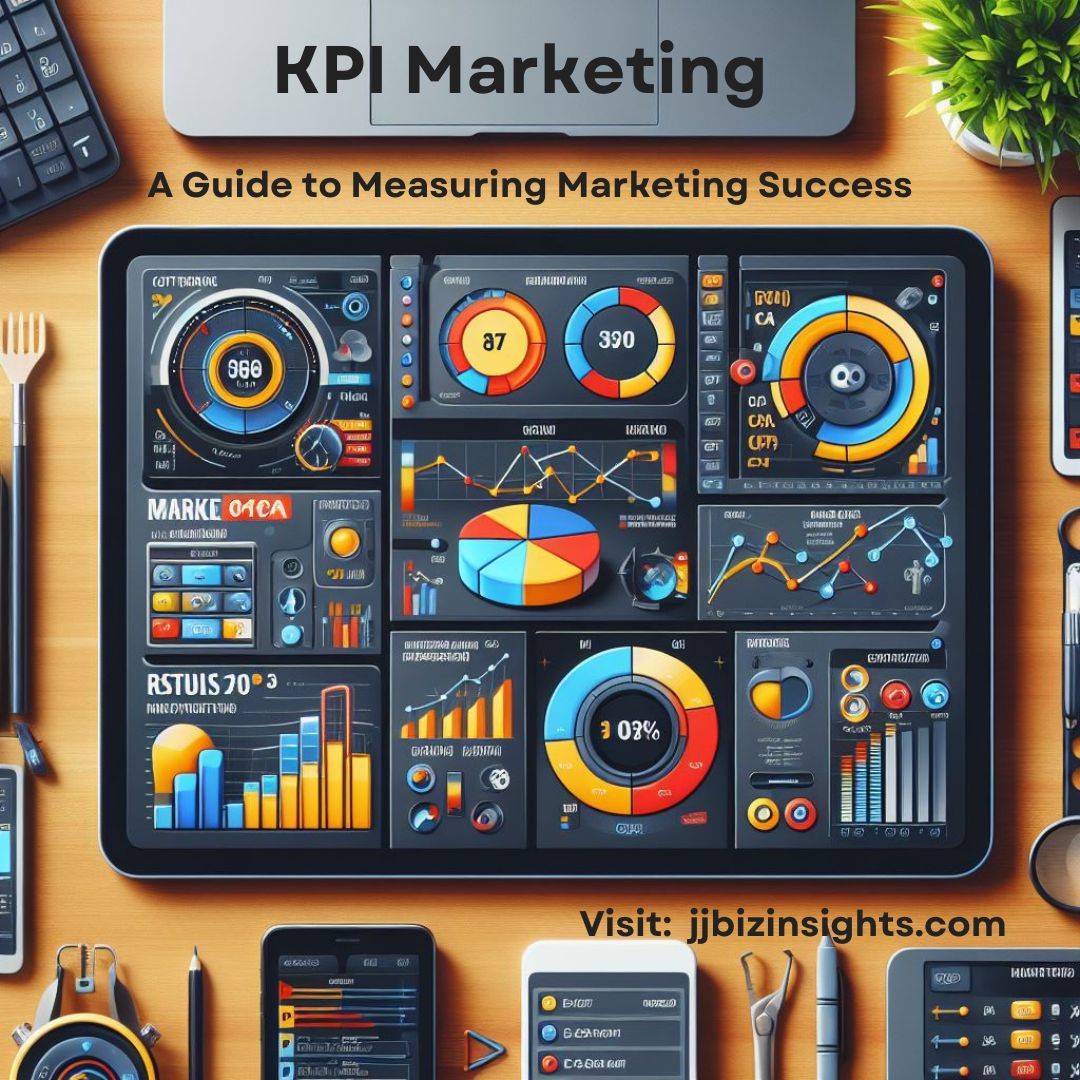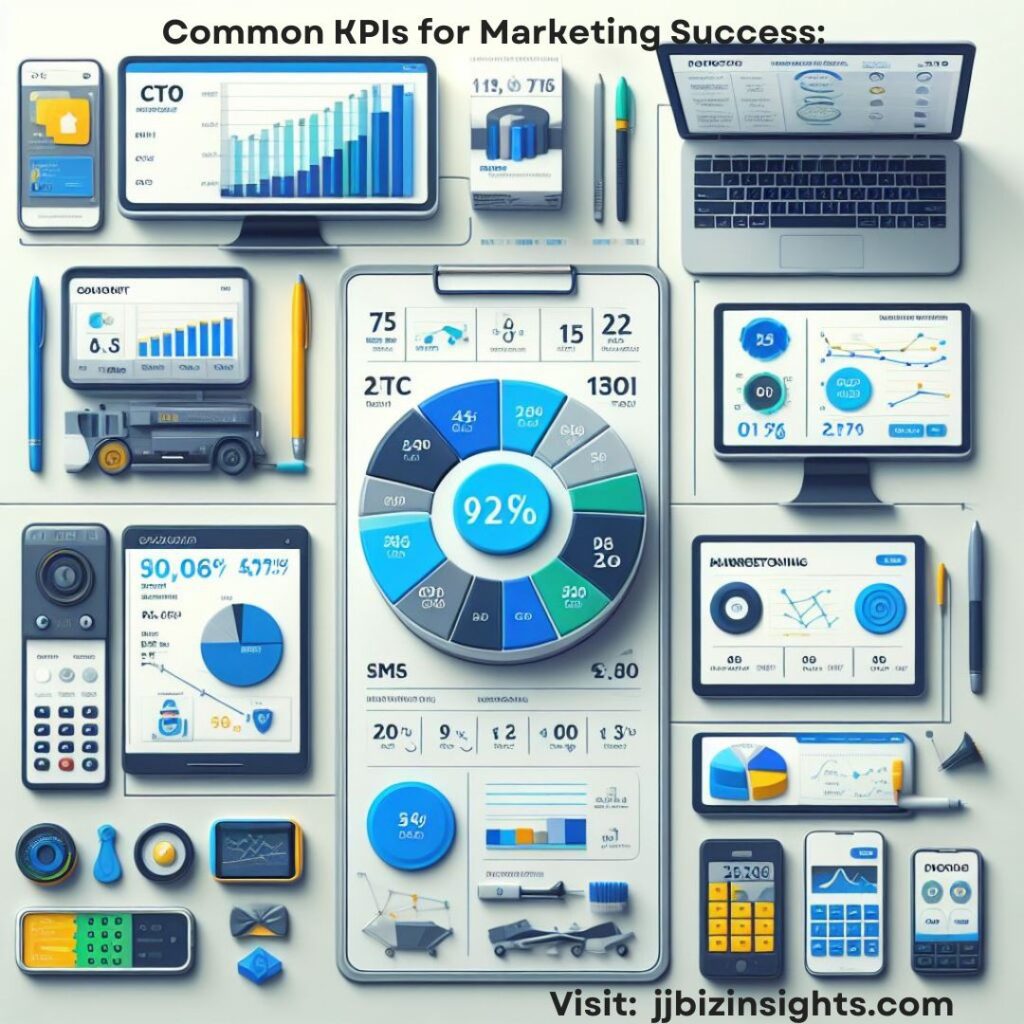
KPI Marketing: A Guide to Measuring Marketing Success
KPI Marketing: A Guide to Measuring Marketing Success.
In the world of marketing, where success hinges on measurable results, key performance indicators (KPIs) act as the guiding compass. They provide a clear and objective framework for tracking progress, evaluating campaigns, and measuring the overall effectiveness of your marketing efforts. By establishing SMART KPIs and diligently monitoring their performance, businesses can ensure their marketing initiatives are driving the desired outcomes and contributing to their ultimate business goals.
The SMART Framework: Defining Effective KPIs:
To ensure your KPIs are impactful and guide your marketing efforts effectively, they should be:
The SMART Framework: Defining Effective KPIs
- Specific: KPIs should be crystal clear, leaving no room for ambiguity. Define precisely what you want to measure. For instance, instead of a vague goal like “increase website traffic,” specify “increase organic website traffic by 20% in the next quarter.”
- Measurable: Quantify your objectives with specific metrics. Whether it’s website visits, conversion rates, or social media engagement, ensure that you can track and analyze the data.
- Attainable: Set ambitious yet realistic goals. Stretch your team’s capabilities without making the targets unattainable. Strive for growth within reasonable bounds.
- Relevant: Align KPIs directly with your marketing objectives and broader business goals. Each KPI should contribute meaningfully to your overall strategy.
- Time-bound: Establish a timeframe for achieving your KPIs. Deadlines create urgency and accountability. For example, aim to increase lead generation by 15% within the next six months.
KPI Marketing: Common KPIs for Marketing Success:

While the specific KPIs you choose will vary depending on your unique marketing goals and target audience, some commonly used metrics include:
Website Traffic:
- Total website visits: This provides a broad overview of audience reach.
- Unique visitors: Measures the number of individual users visiting your website.
- Traffic sources: Identifies the channels driving traffic to your site, helping you understand how users are finding you.
- Time spent on site: Indicates how engaged users are with your content.
Leads Generated:
- Number of leads generated: Measures the effectiveness of your campaigns in attracting potential customers.
- Lead quality: Assesses the value of your leads based on factors like demographics and engagement level.
- Lead conversion rate: Tracks the percentage of leads that convert into paying customers.
Sales Conversions:
- Number of sales generated: Measures the direct impact of your marketing efforts on revenue.
- Average order value: Indicates the revenue generated per sale.
- Customer acquisition cost (CAC): Analyzes the cost of acquiring new customers.
Customer Engagement:
- Social media engagement: Measures the level of interaction on your social media platforms, such as likes, shares, and comments.
- Email open rates and click-through rates: Assess the effectiveness of your email marketing campaigns.
- Website bounce rate: Indicates the percentage of visitors who leave your site quickly, suggesting low engagement.
Return on Investment (ROI):
- Marketing ROI: Measures the overall profitability of your marketing investments.
- Campaign ROI: Analyzes the return on investment for specific marketing campaigns.
KPI Marketing: Going Beyond the Numbers:
While quantitative measures are crucial, it’s also important to consider qualitative factors like brand sentiment, customer satisfaction, and brand awareness. These factors can provide valuable insights into the overall effectiveness of your marketing efforts and contribute to a more comprehensive understanding of your brand’s impact.
KPI Marketing: Unlocking the Power of KPIs:

By establishing and monitoring SMART KPIs, businesses can reap significant benefits, including:
- Improved campaign effectiveness: Focus your efforts on initiatives that are demonstrably driving results.
- Optimized resource allocation: Allocate resources efficiently based on data-driven insights.
- Enhanced decision-making: Make informed decisions based on concrete evidence, rather than intuition or guesswork.
- Increased accountability: Track progress and hold teams accountable for achieving their objectives.
- Demonstrated value: Quantify the impact of your marketing efforts and secure buy-in from stakeholders.
KPI Marketing: Building a Culture of Measurement:
Creating a data-driven culture is essential for maximizing the value of KPIs. Encourage team members to regularly review data, analyze results, and share insights across departments. Foster a culture of open communication and collaboration, where everyone is invested in measuring and improving marketing performance.
KPI Marketing: What are some other KPIs?
Here are some additional Key Performance Indicators (KPIs) commonly used in marketing:


7. Social Media Engagement:
- Includes metrics like likes, shares, comments, and followers on social media platforms.
- Engagement reflects audience interest and interaction with your content.
Social Media Engagement Metrics

These metrics reveal how frequently people interact with your content. They serve two essential purposes:
- Audience Interest: High engagement indicates that your audience finds your content compelling enough to take action (likes, comments, shares, etc.).
- Algorithm Signals: Engaged users send powerful signals to social media algorithms, potentially expanding your content’s reach.
Here are some key social media engagement metrics:
- Engagement Rate:
- Measures the number of interactions (reactions, comments, shares) relative to your audience size.
- Formula: Engagement Rate=AudienceEngagements×100%
- Consider different ways to define “audience” (e.g., followers, potential viewers).
- Likes, Comments, and Shares:
- Individual actions that contribute to overall engagement.
- Each like, comment, or share adds to the engagement count.
- Post Engagement Rate:
- Ratio of engagements to impressions or reach.
- A high rate suggests content resonates well with viewers.
- Account Mentions:
- Organic mentions (e.g., @mentions not in replies) indicate brand awareness.
- Being tagged in Instagram stories without prompting is a positive sign.
Remember, the choice of KPIs depends on your specific business objectives and industry. Regularly review and adapt your KPIs to stay aligned with your evolving marketing strategy! 📊🚀
Remember, KPIs are not a static set of metrics. As your business and marketing goals evolve, your KPIs should adapt accordingly. Regularly evaluate and refine your KPIs to ensure they remain relevant and impactful. By embracing the power of data and continuously honing your measurement approach, you can ensure your marketing efforts are not just reaching their targets, but exceeding them.
Failing to Track Results: Flying Blind in the Marketing World





